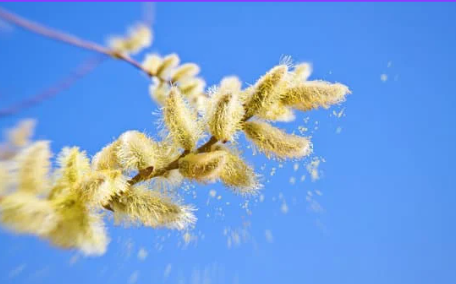By Amina Mukaty, 2024 Spring Programs Intern

Here in the Lone Star State, pollen is not just an irritant; it’s a vibrant ensemble of tiny grains that make every season of the year eventful. From McAllen to Austin – Texas is home to a diverse range of pollen-producing plants, each with its unique background.
Starting with autumn, Ragweed unleashes its microscopic pollen grains into the air, triggering allergic reactions all over the place. Along with Ragweed, mold spores often sprawl in damp areas, geared up and ready to cause chaos on gullible noses.
As we bring our sweaters and mittens out – Cedar Pollen swoops in with the cool breeze. If you have the sniffles around wintertime, you can likely blame these sly suspects. Ashe Juniper trees, which are spread out throughout Texas, disperse pollen into the air from December until springtime.
Just when you start to enjoy long sweater-less walks with the blooming bluebonnets in sight – beware of stopping to smell the flowers, as it is time for the annual championship of the several pollen types. Cedar is riled up and so are several other types of pollen that come from grasses and elm, oak, ash, and hackberry trees; ready to wreak havoc.
There are usually several tell-tale signs that your immune system mistakenly assumes that these tiny, harmless water-soluble proteins are a monstrous threat. Symptoms range from runny or congested noses, sneezing, headaches, fatigue, watery eyes, coughing, sinus infections, and asthma flare-ups. To accurately pinpoint which type of pollen species or allergen is the “invader” that your body is suspicious of, it is recommended to seek an allergy test.
To mitigate allergy symptoms, consider minimizing outdoor activities, utilizing air purifiers in your home, and asking a healthcare professional for recommendations on the numerous over-the-counter antihistamines and other remedies available. Many Texans already have favorites stocked up in their cabinets!
Remember that you’re not alone, fellow allergy warrior, according to the CDC, 25.7% of of adults and 19% of children in the U.S. have seasonal allergies. Dallas and Houston have also been named as the “allergy capitals” of America. Load your pocket with tissues and don’t let these dusty irritants let your cowboy hat fall off!




